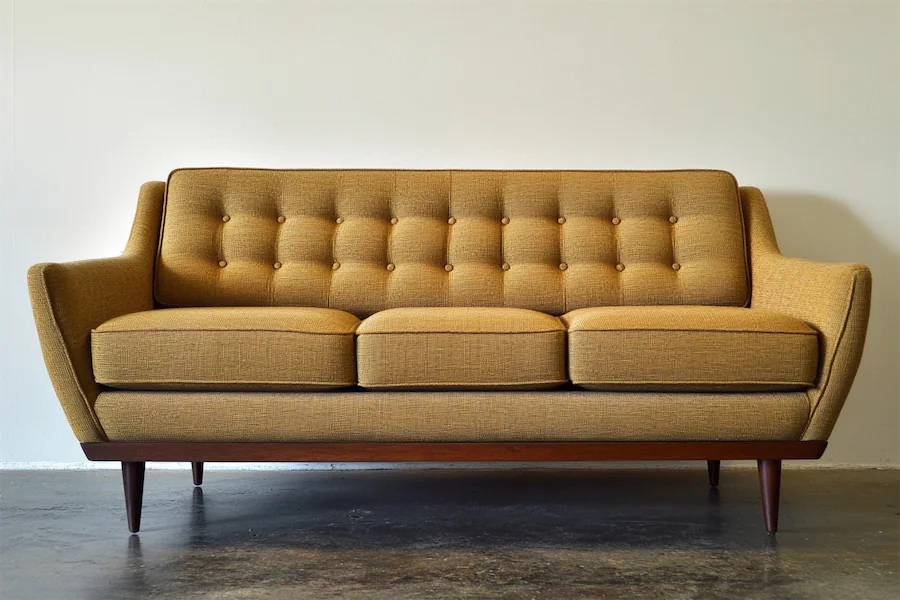Mid-century sofas, emblematic of the mid-20th century design movement, are celebrated for their clean lines, organic shapes, and functional elegance. This article explores their history, key features, applications, selection considerations, and enduring appeal in contemporary interiors.
Introduction to Mid-Century Sofas
A mid-century sofa embodies the design principles of the mid-20th century, emphasizing simplicity, functionality, and a seamless integration with nature. Characterized by sleek profiles, tapered legs, and minimalist ornamentation, these sofas have experienced a resurgence, becoming staples in modern interior design.
History and Origins of Mid-Century Sofas
The mid-century modern design movement, spanning from the mid-1940s to the late 1960s, sought to break away from traditional design norms, embracing innovation and new materials. Pioneering designers like George Nelson, Florence Knoll, and Charles and Ray Eames introduced furniture pieces that were both functional and aesthetically pleasing. The Marshmallow Sofa, designed by Irving Harper for George Nelson Associates in 1956, exemplifies this era’s creativity, featuring a playful arrangement of circular cushions on a metal frame.
Key Features of Mid-Century Sofas
Mid-century sofas are distinguished by several hallmark characteristics:
- Sleek Silhouettes: Emphasis on clean, straight lines and geometric forms.
- Tapered Legs: Often made of wood, angled outward, contributing to a light and airy appearance.
- Organic Shapes: Incorporation of gentle curves and asymmetry, reflecting natural forms.
- Functional Design: Prioritization of comfort and usability without superfluous decoration.
- Innovative Materials: Use of materials like molded plywood, fiberglass, and metal, often juxtaposed with natural wood.
Applications of Mid-Century Sofas
In interior design, mid-century sofas serve multiple roles:
- Focal Points: Their distinctive designs can anchor a room’s aesthetic.
- Versatile Integration: Ability to complement various décor styles, from contemporary to eclectic.
- Space Optimization: Often designed with compact forms suitable for both small and large spaces.
- Timeless Appeal: Their classic design elements ensure longevity beyond fleeting trends.
Considerations When Choosing a Mid-Century Sofa
Selecting the appropriate mid-century sofa involves several factors:
- Authenticity vs. Reproduction: Decide between vintage pieces, which may require restoration, and modern reproductions that offer updated materials and comfort.
- Material Quality: Look for durable upholstery and sturdy frame construction to ensure longevity.
- Comfort: While aesthetics are important, ensure the sofa provides adequate comfort for your needs.
- Space and Proportion: Consider the sofa’s dimensions in relation to your room size to maintain balance and harmony.
- Color and Finish: Choose hues and materials that complement your existing décor and personal style.
Conclusion
Mid-century sofas encapsulate a pivotal era in design history, merging form and function in a way that remains relevant today. Their enduring popularity is a testament to their versatility, aesthetic appeal, and the timeless principles of mid-century modern design.
